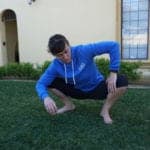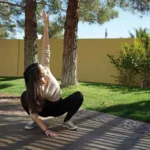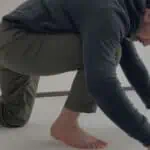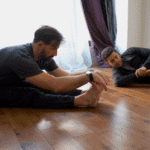Is nagging knee pain holding you back? It’s not so much that you feel it every time you take a step, but it’s worrisome when it acts up after you do a quick sprint or bend and twist to grab something.
Maybe you’ve gone to a doctor who said you just have to limit your activities and “you’re not getting any younger”. Even though you’ve told them how active you are and how important that is to you…
Should you just resign yourself to either toning everything down or just dealing with the pain?
Well not necessarily.
This article will show you that knee health can be improved, and I’ll give you a routine to help your knees get the movement they need to feel and move better.
Here’s what we’ll cover in this article:
- Why are your knees all wonky?
- No, squatting is not “bad for your knees”
- This routine will help your knees
- But it’ll work even better alongside this
Before we get into the meat here, I just want to remind you that the information in this article is no substitute for being seen by a professional in-person if you have ongoing issues–particularly related to pain or weakness. There are certain rare, but serious conditions that can cause knee pain, and those conditions must be treated by a physician.
Okay, let’s do this 🙂
What’s Causing Your Knee Crunching and Pain?
For now, let’s leave specific, traumatic knee injuries aside, when those happen for the most part you know what went wrong. And you’ve probably got a recovery plan in place with your physician and physical therapist.
Also more commonly, both serious and relatively minor knee injuries are “non-contact” knee injuries. Ligaments and muscles can be sprained and strained without being tackled or anything hitting your knee. These injuries occur from excessive forces at the knee due to misalignments in landing from jumps or running, and can have a lot to do with just not being adequately prepared. You can absolutely build your knees’ capacity to handle stresses. You just have to know how to do it!
To explain this further, let’s do a quick rundown of how the knee works…
1. Primary Functions of the Knee
The knee is a hinge joint, that has two main functions: Flexion (bending) and Extension (straightening). There’s a small degree of rotation available at the joint, but only to allow for the proper mechanics of the major motions of extension and flexion.
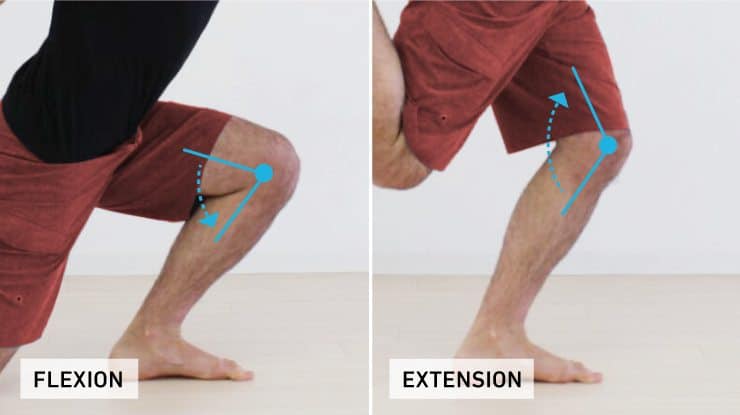
When it comes to “ideal” performance of certain exercises, it’s a good idea to avoid excessive rotation. Proper alignment helps you put forth your best strength and power in movements.
But (and this is a big but) rotational forces are going to happen, even if you try to avoid them.
Enter the ligaments.
2. Supportive Knee Tissues
There are 4 major ligaments that stabilize the knee through the following planes of movement:
- shear (sliding)
- rotation
- lateral (side to side)
Without these ligaments, your knee would be constantly flopping all over the place!
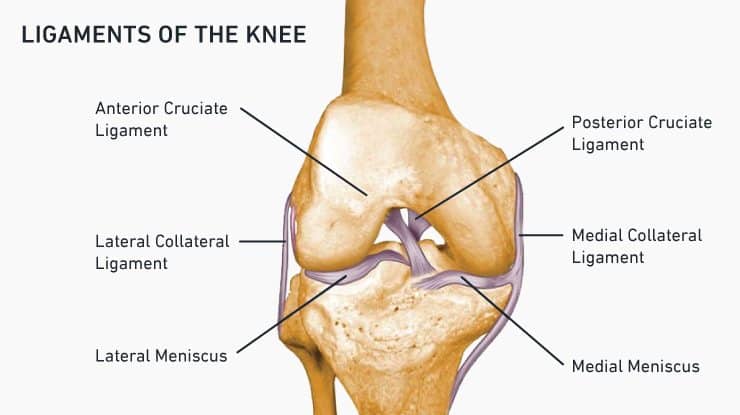
Another protective anatomic structure is the meniscus, which sits between the upper and lower leg to help cushion the joint and absorb forces. We have two menisci in each knee–medial and lateral.
As you may know, all of these tissues are prone to damage, either from repetitive strain or from trauma.
3. The Purpose of the Kneecap
Next up: the kneecap (aka the patella). This is an intermediary structure, which helps to connect the quadriceps muscles to the tibia through their respective tendons. The patella improves the leverage of the quadriceps muscles and increases the amount of force they can generate on the tibia.
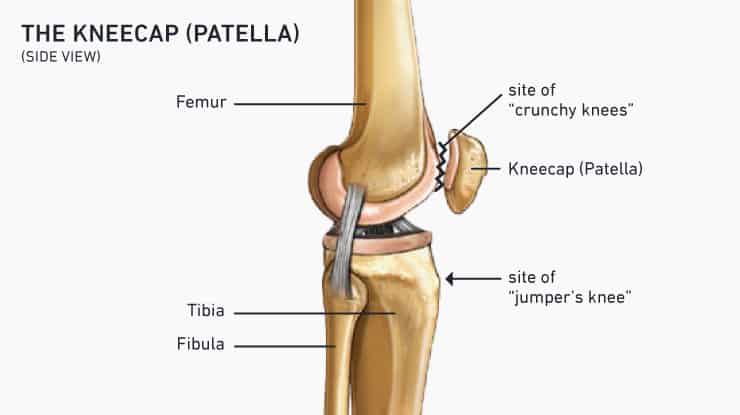
Unfortunately, when movement at the patella is not optimal there can be irritations to the underside of the bone and at the patellar tendon.
This is the common source of the complaint of “crunchy” knees and, of course, the very prevalent pinpoint pain of patellar tendinitis, the bane of runners everywhere. And more specifically the attachment site at the tibia is also a source of pain in what people call the “jumper’s knee” in both young kids and old fogey weekend warriors.
4. Muscles that Interact with the Knee
There’s a whole system of muscles that interact with the knee in some form or fashion, but the following are the most important:
- Quadriceps
- Hamstrings
- Pes anserine (a tendinous connection made up of the sartorius, gracilis, and semitendinosus)
- Gastrocnemius and soleus (calf muscles)
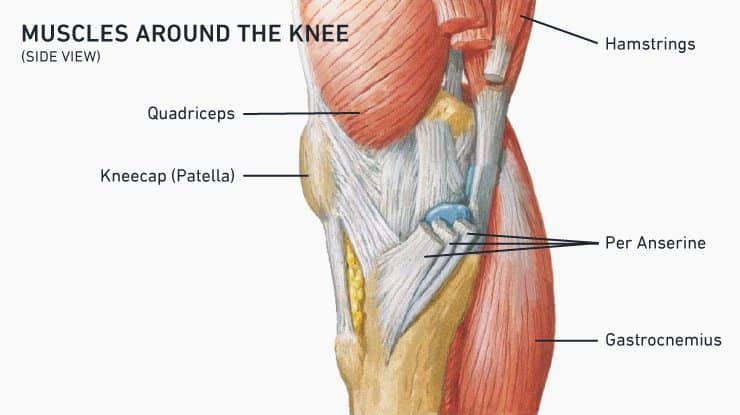
If any of these muscles is tight, weak, or otherwise not functioning the way it should, it can get in the way of how your knee is able to move, and that can leave you open to injuries.
Is Squatting Bad for Your Knees?
The short answer: No, especially with proper conditioning of the knees.
Understanding how the knee works and what can go wrong is different from knowing what will or won’t aggravate issues going on in your body.
We see comments every day from people, saying things like “squatting is bad for your knees,” or, “if you move like that, you’re going to wreck your knees,” or, “my doctor said to only do X, and you’re showing Y, so that’s clearly going to hurt people.”
99% of these comments are coming from a good place. If someone has had a particular experience that’s hurt their knees, they want to share that experience with others, to help them avoid injuries.
The problem with taking those comments at face value is that they don’t account for the very wide range of responses that can occur in different people’s bodies. Just because squatting a certain way aggravated John Smith’s knee injury doesn’t mean it will do the same for you.
Plus, certain motions may technically be “wrong” for the knees, but if done with proper mechanics and with some nuances, and if you are adequately prepared, they are not “dangerous” by any means.
In this video, I demonstrate twisting and rotational movements, distinguishing between safe and unsafe approaches:
Instinctually, you may look at the video above and say it’s “not safe” to be moving my knees in the ways that I am, but if you listen carefully to the distinctions I make between what’s safe and what’s unsafe, you’ll see it makes a lot of sense. These principles are the distillation of my experience working with thousands of patients over 20 years as a physical therapist.
Yes, it’s obvious that extreme rotational forces are not good for the knees. And in the video I show how to mitigate that as much as you can by rotating on the balls of your feet. But knowing that some rotation and other movement is likely unavoidable in your sport and activities, and knowing how to approach those movements in a safe manner, will make all the difference.
Fix Your Knee Pain: A Routine for Knee Health
Here’s where things get fun 🙂
If you have existing knee pain (which I’m assuming you do, if you’re reading this article!), there are 3 main things you’ll want to focus on:
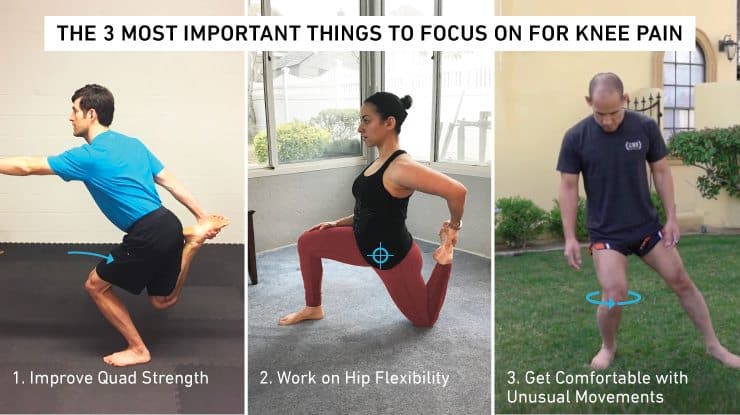
For the first two, see our leg strength routine and our hip mobility routine. For the third focus, though, the following routine will be an important key to getting your knees feeling better.
One note before we get into the routine: The idea with these exercises is not to work through your pain–please do not do that! Go slowly, and only work within ranges that do not exacerbate your knee pain. Over time, those ranges may increase, but for now, just work at your own level.
As you can see, the purpose of these movements is not to “get a workout” or to try to get as many reps as you can. The purpose is to introduce your body, and specifically your knees, to movements in different planes.
Giving your knees this kind of regular motion will help them start to feel more at ease with movement. Plus, by getting comfortable with these types of movements in a controlled and gentle manner, you’ll increase your ability to avoid re-injuring your knee if (and when) you wind up moving in those ways, even if inadvertently.
Knee Circles
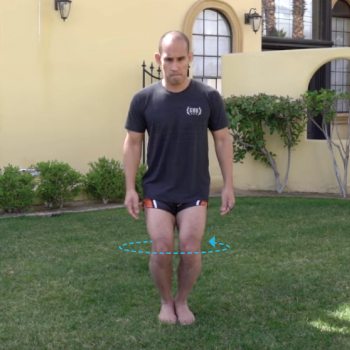 This exercise is good for improving joint position awareness, as well as increasing tolerance of rotational movements.
This exercise is good for improving joint position awareness, as well as increasing tolerance of rotational movements.
- Start with your feet together, and squat down. Start with a very shallow squat and do a few rotations in each direction, slowly and with control. Then, if you can tolerate it, squat down a little deeper and repeat.
- Next, repeat the rotations with your feet about shoulder-width apart.
- Then, step one leg out to the side and do rotations on the bent leg. Again, only go as deeply as you can without pain. Repeat on the other side.
- Finally, go into a regular lunge position and do rotations in both directions with the front (bent) knee.
Play around with depth in each position, and with the circumference of your rotations.
Star Pattern Step Knee Bends
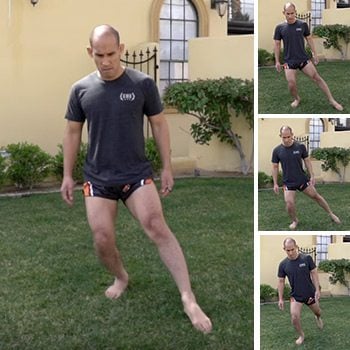 Here’s a good exercise for working on controlling your knee positioning while in motion.
Here’s a good exercise for working on controlling your knee positioning while in motion.
- Start by standing with your feet shoulder width apart. Stretch one leg out in front of you on the ground, as you bend your other knee to help your foot slide forward.
- Stand back up then repeat in a similar way, but this time bringing your foot out at a 45-degree angle in front of you. Repeat three or four more times, each time moving your foot further to the side/back.
- Repeat on the other side.
Front Scale Quarter Circle
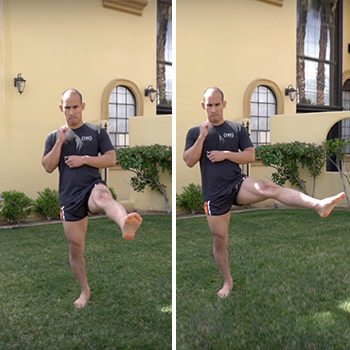 The front scale is an exercise with many benefits, but this variation is especially good for improving balance and coordination with straight leg positioning. Those are important attributes for the health of your knees because they’ll help you control your movements in precarious positions.
The front scale is an exercise with many benefits, but this variation is especially good for improving balance and coordination with straight leg positioning. Those are important attributes for the health of your knees because they’ll help you control your movements in precarious positions.
- Stand with feet together, and raise one leg up in the air. Keep both knees locked out as you do so, and maintain an upright posture.
- Once your front leg is at the top position (wherever that may be for you), keep your torso stable as you rotate your leg out to the side, opening up the hip.
- Don’t be concerned about how much you are able to lift your leg, or how far you can rotate it outward. Just work within the ranges that you can.
Jump Landing with Control
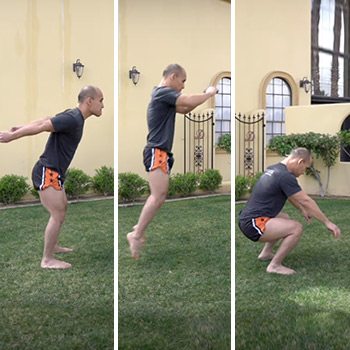 The last in this sequence helps to improve knee control in movement, with the added layer of impact.
The last in this sequence helps to improve knee control in movement, with the added layer of impact.
- Start with a basic broad jump, but focus on landing softly with bent knees, and control your landing.
- Once you’re comfortable with that, play around with jumping on a diagonal, or with one leg at a time.
- The key with any of the variations shown is to focus on control. Jumping is perfectly safe for the knees–if done with safe technique.
How Full-Body Training Helps Even More
As you’ve probably already discovered for yourself, knees often take the heat for problems that start elsewhere. Weak hips, tight ankles, or uncoordinated movement patterns can all force your knees to do more than they should.
Isolating the knee can be helpful at first, and to get you moving without too much pain right away, but it’s best to get into an integrated whole body program sooner rather than later. All the principles I introduced in this article about safe positioning of the knees, and what your knees need to stay healthy and pain-free, can be applied to what we teach in Elements.
Elements also includes a Gradual Track, designed explicitly for those with sensitive knees or prior injuries. It features fewer squats, more comfortable lunging variations, and shorter sessions—perfect for gradually restoring your knee health without strain.

New York, NY, USA
I’ve had this nagging knee pain for years. It comes and goes, usually when I do a lot of squatting or hiking. When I started Elements, I felt it often and I even considered stopping the program a week or so in, but I'm glad I stuck it out and paid attention to how my knee was feeling because by about week 5, the pain was mostly gone and my squat was a whole lot deeper than it ever had been before.
Shortly after finishing Elements, my wife and I went on a long hike--an activity that had reliably aggravated my knee pain in the past, especially when going downhill. But this time? I didn't even notice my knees.
Build Better Knees With Better Movement
Elements gives your knees what they really need: a resilient, well-coordinated system. Even if your knees have limited you in the past, this kind of training can help you move with more confidence and less pain.



